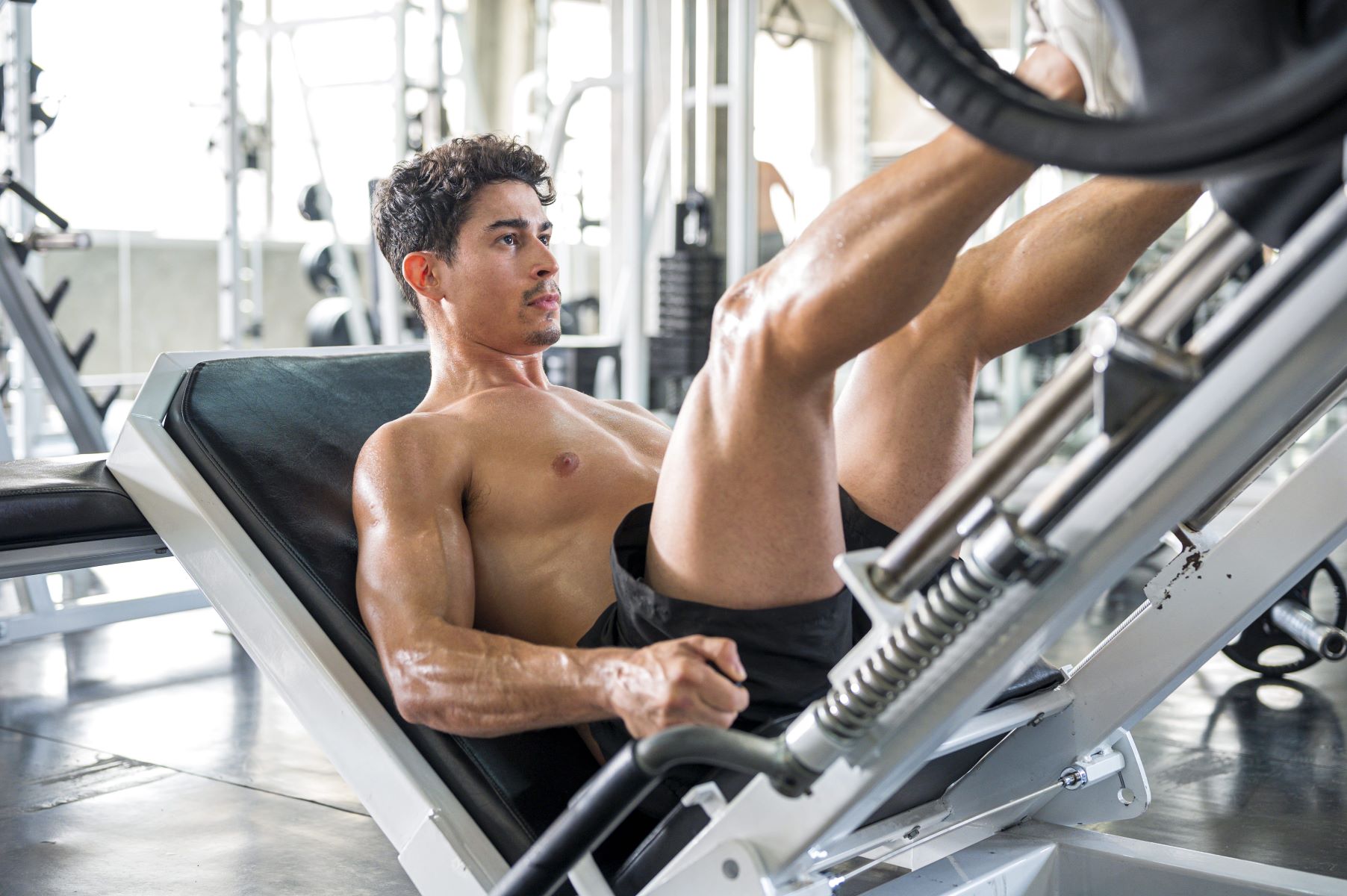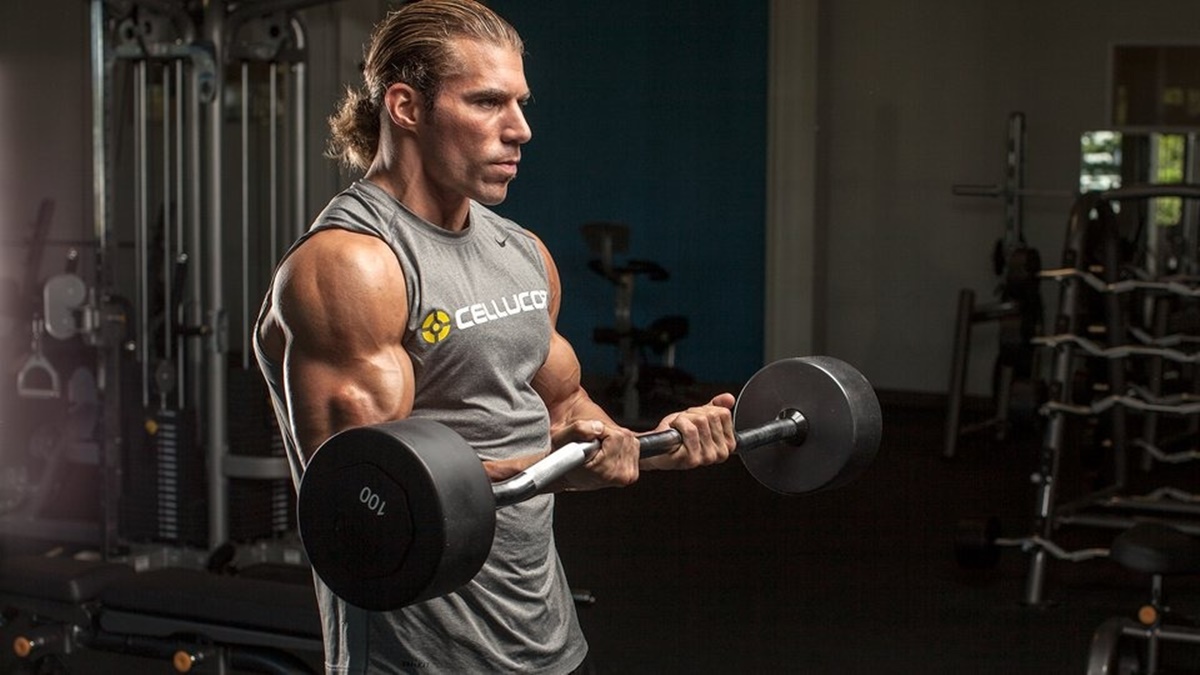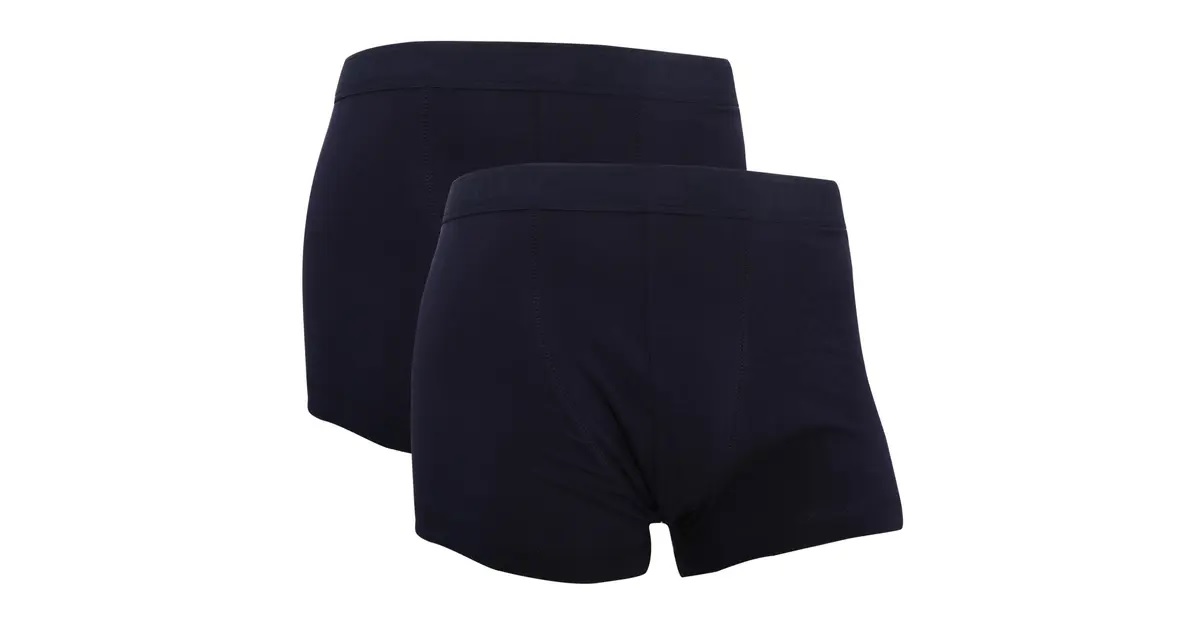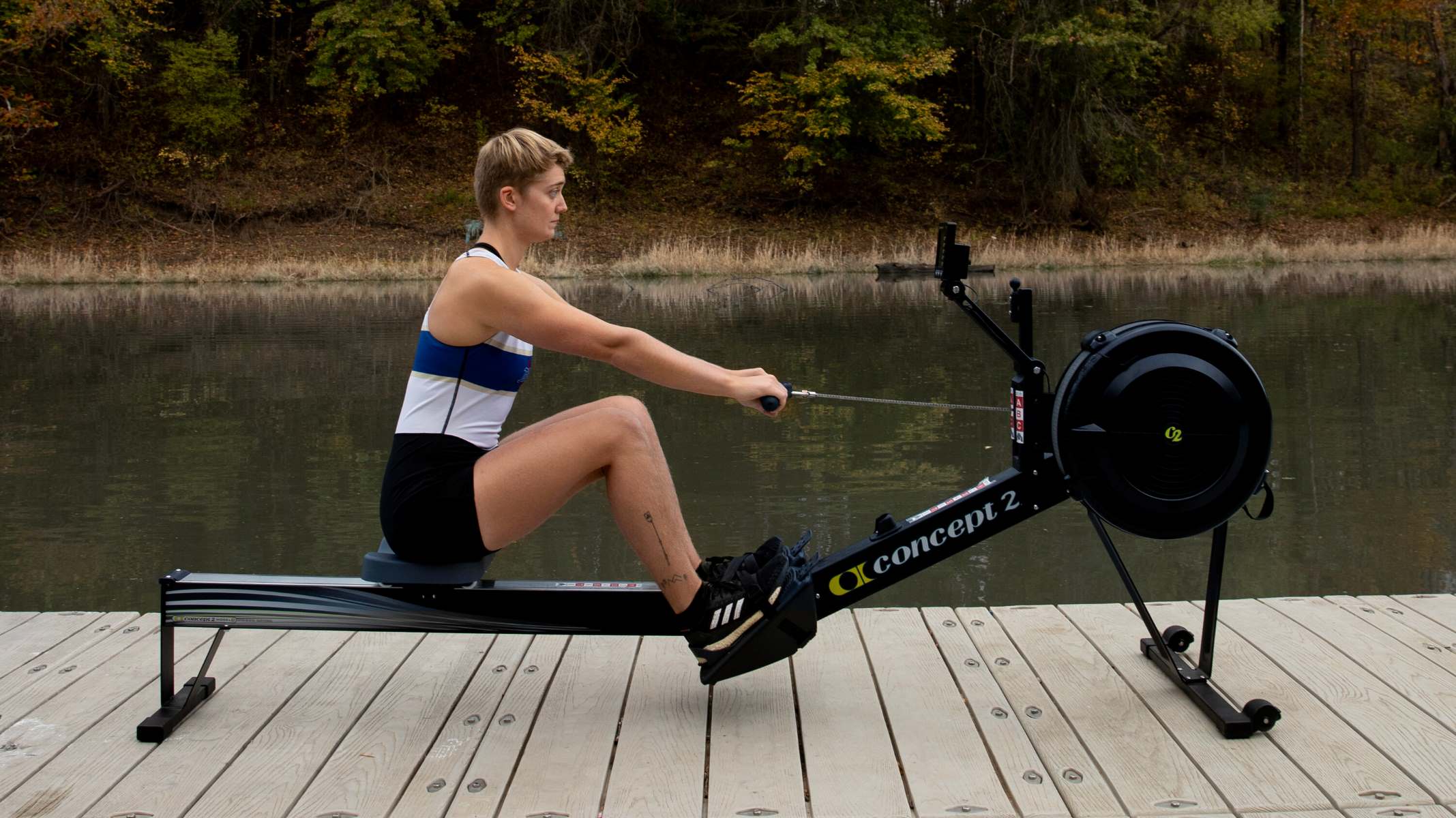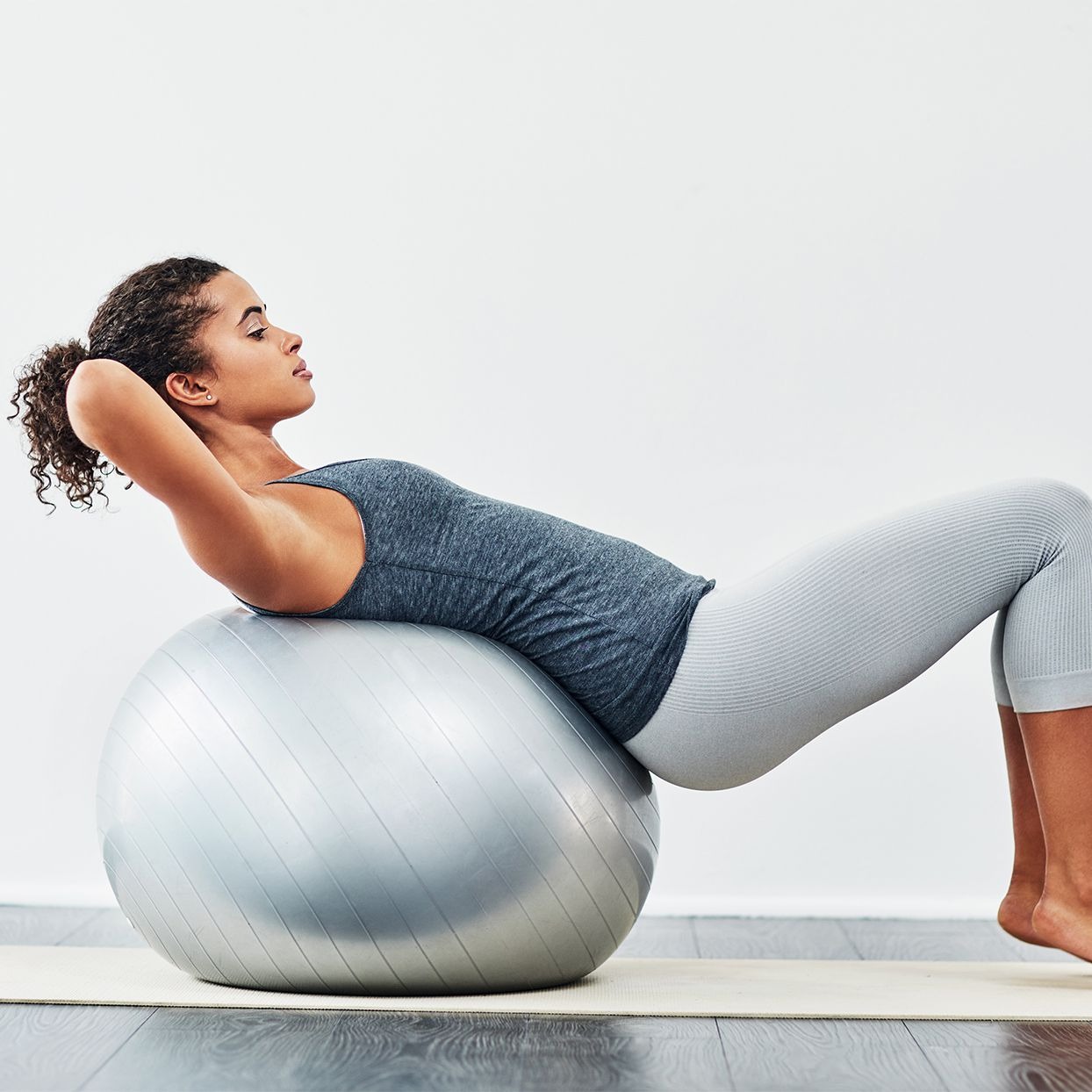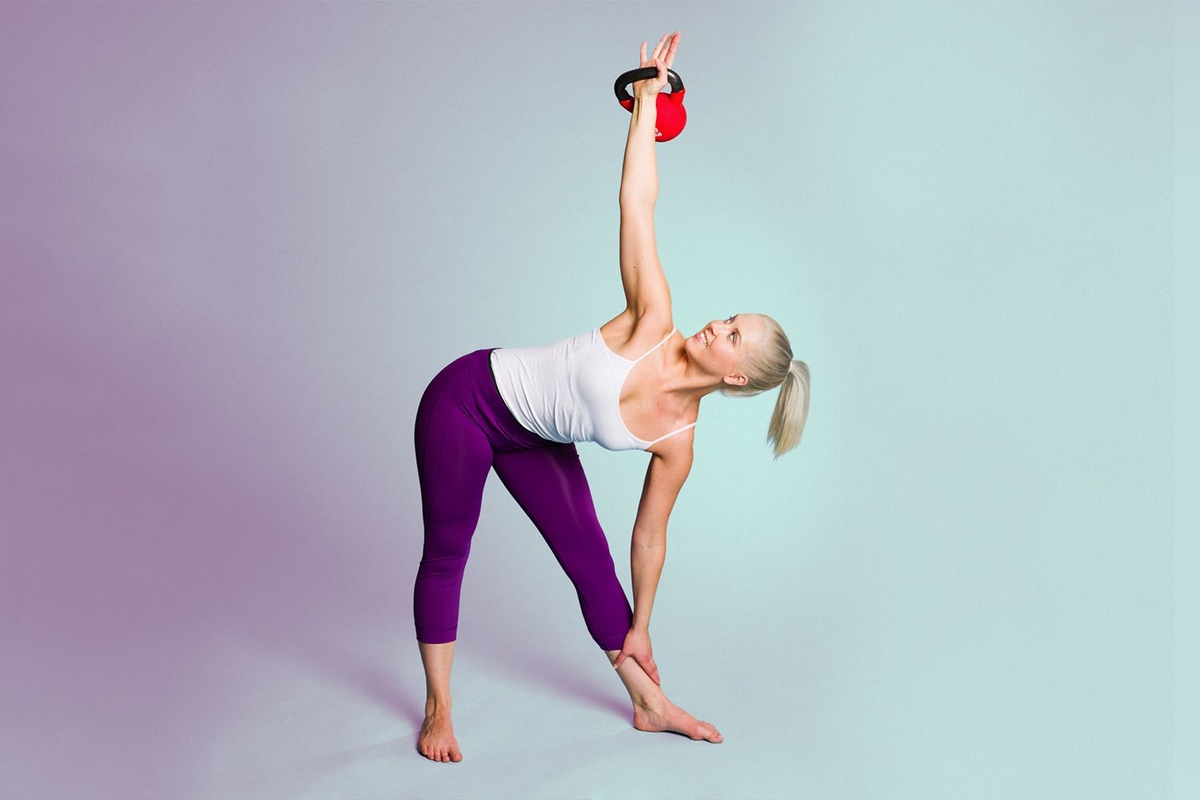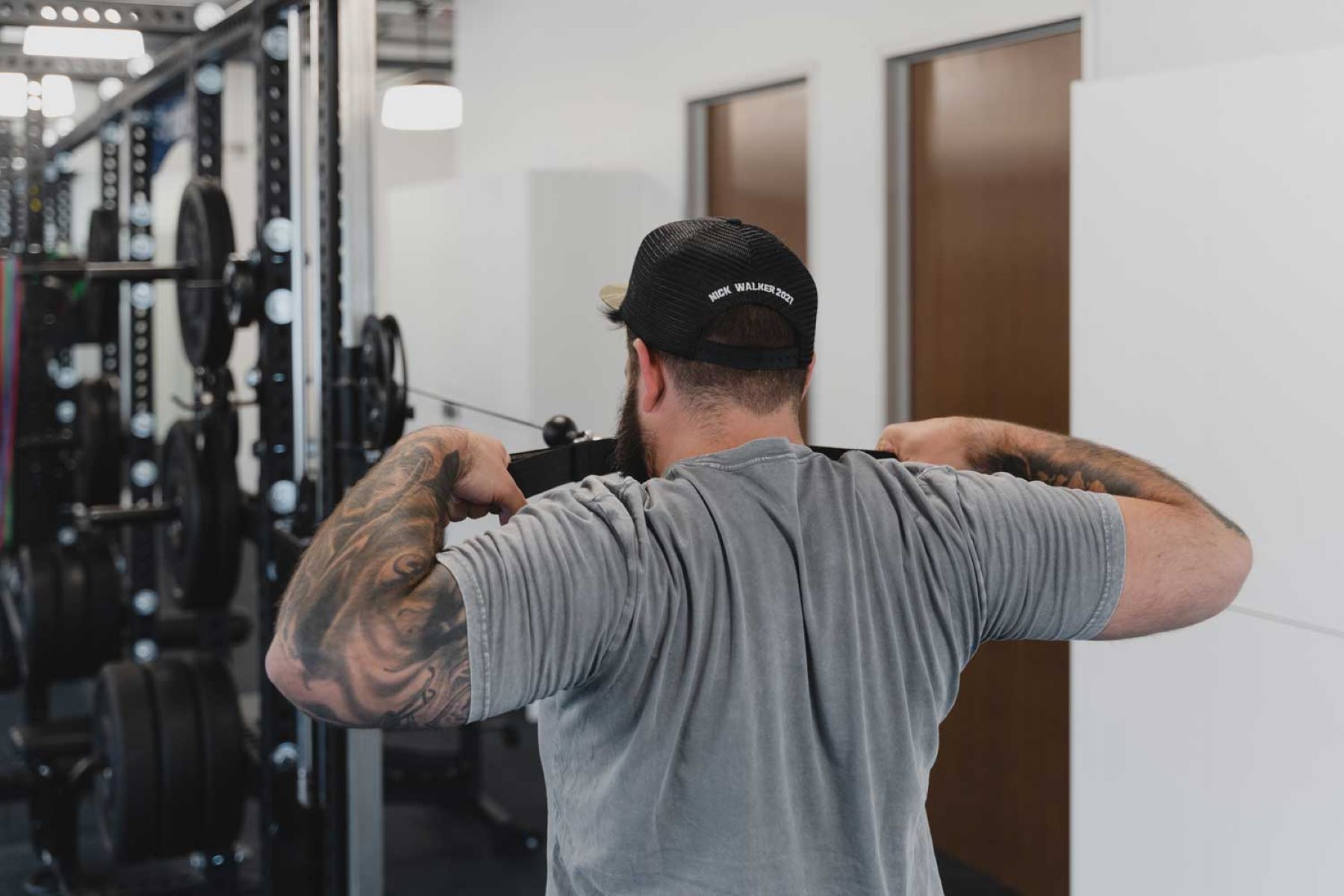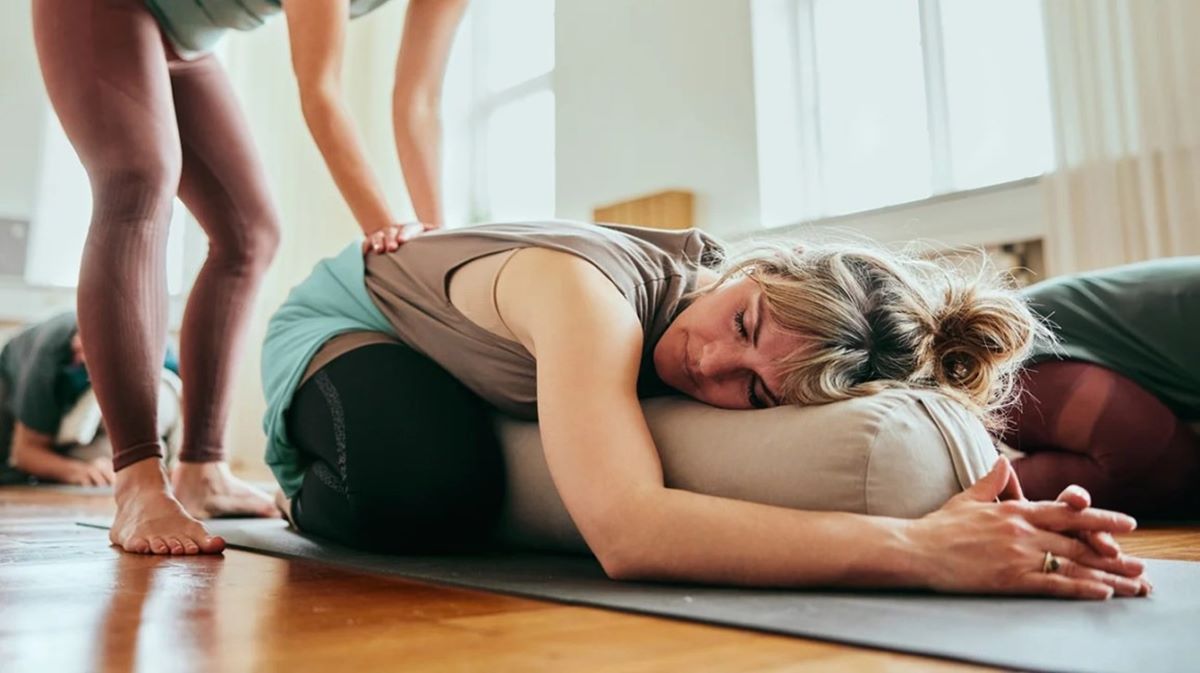

Featured
What Is A Good Shoulder Workout
Modified: March 1, 2024
Discover the best featured shoulder workout routines to build strength and definition. Achieve your fitness goals with these effective exercises for strong, sculpted shoulders.
Introduction
The shoulders are a critical part of the human body, providing both stability and mobility. Having strong and well-developed shoulders not only enhances your overall physical appearance but also plays a significant role in your functional fitness. Whether you’re an athlete, fitness enthusiast, or simply looking to improve your upper body strength, incorporating effective shoulder workouts into your routine is crucial.
In this article, we will explore the importance of shoulder workouts, the basic anatomy of the shoulder, how to choose the right exercises, and provide a sample shoulder workout routine. Additionally, we will discuss tips for a safe and effective shoulder workout, common mistakes to avoid, and the benefits of having strong and well-developed shoulders.
By the end of this article, you will have a better understanding of the significance of shoulder workouts and how they can contribute to your overall fitness goals. So, let’s dive in and learn how to build strong and shapely shoulders!
Importance of Shoulder Workouts
Shoulder workouts are not just about having aesthetically pleasing shoulders; they serve a much greater purpose. The shoulders are involved in almost every upper body movement you perform, from lifting objects to pushing and pulling exercises. Here are some key reasons why shoulder workouts should be an essential component of your fitness regimen:
- Injury Prevention: Strengthening the muscles around the shoulders, including the deltoids, rotator cuff, and traps, can help prevent common shoulder injuries. This is especially important for athletes involved in sports that require repetitive overhead movements such as tennis, swimming, and weightlifting.
- Improved Functional Fitness: Strong and stable shoulders improve your overall functional fitness, making daily activities easier. Whether you’re carrying groceries, lifting children, or reaching for something on a high shelf, having strong shoulders can significantly improve your quality of life.
- Enhanced Upper Body Strength: Building strong shoulder muscles translates to increased strength in other upper body exercises such as bench presses, push-ups, and pull-ups. The shoulders act as a foundation for these movements, and a well-developed shoulder complex can significantly improve your performance.
- Better Posture and Alignment: Poor posture is a common issue in today’s sedentary lifestyle. Shoulder workouts help strengthen the postural muscles, promoting better alignment and reducing the risk of developing rounded shoulders or a hunched back.
- Improved Shoulder Stability: The shoulder joint is one of the most mobile joints in the body, but this mobility comes at the cost of stability. Shoulder workouts focus on strengthening the surrounding muscles to improve joint stability and reduce the risk of dislocation or instability.
Now that we understand the importance of shoulder workouts, let’s delve into the basic anatomy of the shoulder to better understand which muscles are involved and how they function.
Basic Anatomy of the Shoulder
Before we dive into the various shoulder workouts, it’s important to have a basic understanding of the anatomy of the shoulder. The shoulder joint, also known as the glenohumeral joint, is a complex structure consisting of bones, ligaments, tendons, and muscles. Here’s a brief overview of the key components:
1. Bones: The shoulder joint is formed by the articulation of the humerus (upper arm bone), scapula (shoulder blade), and clavicle (collarbone). These bones work together to provide a wide range of motion to the shoulder.
2. Ligaments: Ligaments are fibrous connective tissues that connect bones to other bones, providing stability to the joint. In the shoulder, there are several ligaments, including the acromioclavicular (AC) ligament, coracoclavicular (CC) ligament, and glenohumeral ligaments.
3. Rotator Cuff Muscles: The rotator cuff is a group of four muscles that surround the shoulder joint, including the supraspinatus, infraspinatus, teres minor, and subscapularis. These muscles work together to stabilize the shoulder, control movement, and prevent injuries.
4. Deltoid Muscle: The deltoid is the largest muscle in the shoulder and gives the shoulder its rounded shape. It is responsible for the abduction, flexion, and extension of the arm.
5. Trapezius and Rhomboid Muscles: The trapezius and rhomboid muscles are located in the upper back and play a crucial role in shoulder stability and movement. They help retract and depress the scapula, allowing for proper shoulder alignment.
6. Biceps and Triceps: While primarily associated with arm movements, the biceps and triceps muscles also contribute to shoulder stability and motion. The biceps in particular, located in the front of the upper arm, assists in shoulder flexion and supination.
Understanding the basic anatomy of the shoulder is essential in choosing the right exercises and targeting specific muscles during your shoulder workouts. In the next section, we will discuss how to select the most effective shoulder exercises to help you achieve your fitness goals.
Choosing the Right Shoulder Exercises
When it comes to selecting shoulder exercises, it’s important to choose a variety of movements that target different muscle groups within the shoulder complex. This ensures that you develop balanced strength and avoid overloading any one area. Here are some factors to consider when choosing the right shoulder exercises:
- Compound vs. Isolation Exercises: Compound exercises involve multiple muscle groups and joints, while isolation exercises target specific muscles. Incorporating both compound and isolation exercises in your workout routine can help you achieve overall shoulder strength and muscle development. Examples of compound shoulder exercises include overhead presses and push-ups, while isolation exercises include lateral raises and reverse flyes.
- Range of Motion and Mobility: Consider exercises that allow for a full range of motion and improve shoulder mobility. Movements such as arm circles and shoulder dislocations can help increase flexibility and prevent stiffness in the shoulder joint.
- Progressive Overload: Gradually increasing the intensity and challenge of your shoulder exercises is crucial for continued progress. This can be achieved through increasing weights, adding resistance bands, or performing more challenging variations of the exercises.
- Balanced Muscle Development: To avoid muscular imbalances, it’s important to target all areas of the shoulder, including the front (anterior), side (lateral), and rear (posterior) deltoids. Incorporating exercises like front raises, lateral raises, and bent-over rows will ensure balanced muscle development.
- Equipment Availability: Consider the equipment available to you, whether it’s dumbbells, resistance bands, or machines. Choose exercises that can be effectively performed with the equipment you have access to.
- Individual Fitness Level: Take into account your current fitness level and any limitations or injuries you may have. If you have a pre-existing shoulder injury, consult with a healthcare professional or a qualified trainer to modify exercises and ensure safety.
By considering these factors, you can create a well-rounded shoulder workout routine that targets all areas of the shoulder complex. In the next section, we will provide a sample shoulder workout routine to help you get started.
Sample Shoulder Workout Routine
Here is a sample shoulder workout routine that incorporates a mixture of compound and isolation exercises to target all areas of the shoulder complex. Remember to warm up before starting your workout and adjust the weights and sets based on your fitness level:
1. Shoulder Press: This compound exercise targets the anterior deltoids, as well as the triceps and upper chest. Start by sitting or standing with a dumbbell in each hand at shoulder level. Press the weights up overhead, fully extending your arms. Lower the weights back to shoulder level and repeat for 3 sets of 10-12 reps.
2. Lateral Raises: This isolation exercise targets the lateral deltoids, helping to create width and definition in the shoulders. Stand with a dumbbell in each hand, arms resting by your sides. Raise your arms out to the sides until they are parallel to the floor. Pause for a moment and then lower them back down. Perform 3 sets of 12-15 reps.
3. Bent-Over Reverse Flyes: This exercise targets the rear deltoids, helping to strengthen the back of the shoulders. Stand with a dumbbell in each hand, knees slightly bent, and hinge forward at the hips. Keep your back flat and arms hanging straight down. Lift the weights out to the sides, squeezing your shoulder blades together, and then lower them back down. Perform 3 sets of 10-12 reps.
4. Arnold Press: This compound exercise targets all three heads of the deltoids and adds a rotational element. Start by holding a dumbbell in each hand at shoulder level with your palms facing you. Press the weights up overhead, rotating your palms outward as you lift. Lower the weights back down, rotating your palms back towards you. Repeat for 3 sets of 10-12 reps.
5. Front Raises: This isolation exercise targets the anterior deltoids. Stand with a dumbbell in each hand, palms facing your thighs. Raise one arm straight out in front of you until it is parallel to the floor, keeping your arm straight. Lower it back down and repeat with the other arm. Perform 3 sets of 12-15 reps.
6. Shoulder Shrug: This exercise targets the trapezius muscles and helps improve overall shoulder stability. Stand with a dumbbell in each hand, arms at your sides. Lift your shoulders up towards your ears as high as possible, hold for a moment, and then lower them back down. Perform 3 sets of 10-12 reps.
Remember to maintain proper form, engage your core for stability, and listen to your body. If any exercise causes pain or discomfort, stop immediately and seek guidance from a fitness professional.
In the next section, we will discuss important tips for a safe and effective shoulder workout.
Tips for a Safe and Effective Shoulder Workout
Performing shoulder exercises with proper form and technique is vital to ensure a safe and effective workout. Here are some important tips to keep in mind when working out your shoulders:
- Warm Up: Before diving into your shoulder workout, it’s crucial to warm up your muscles. This can be done through dynamic stretches, light cardio exercises, or using resistance bands to activate the shoulder muscles.
- Start with Light Weights: If you’re new to shoulder workouts or returning from an injury, start with lighter weights to focus on form and gradually increase the intensity as your strength improves.
- Maintain Proper Posture: Good posture is key to prevent unnecessary stress on the shoulders. Keep your chest lifted, shoulder blades back and down, and engage your core muscles throughout the exercises.
- Focus on Control and Range of Motion: Avoid using momentum to lift the weights and instead focus on controlled and deliberate movements. Keep the range of motion within your comfortable limits to avoid straining the muscles or joints.
- Don’t Neglect the Warm-Up Sets: Before diving into your working sets, perform a few warm-up sets with lighter weights to prepare your muscles and joints for the heavier loads.
- Pay Attention to Breathing: Remember to inhale during the eccentric (lowering) phase of the exercise and exhale during the concentric (lifting) phase. Proper breathing enhances stability and provides oxygen to the working muscles.
- Listen to Your Body: If you experience pain or discomfort during any exercise, stop immediately. Consult with a healthcare professional or a qualified trainer to assess the issue and make necessary modifications.
- Allow for Proper Recovery: Give your shoulders adequate rest between workouts to allow for muscle recovery and growth. This will help prevent overtraining and reduce the risk of injury.
- Vary Your Workout: Continuously challenging your shoulder muscles with different exercises, rep ranges, and weights will prevent plateaus and ensure ongoing progress.
- Seek Professional Guidance: If you’re unsure about proper form or need assistance with your shoulder workouts, consider working with a certified personal trainer who can provide guidance and ensure your safety.
Following these tips will not only help you achieve better results from your shoulder workouts but also minimize the risk of injury. Now that you’re equipped with the knowledge to perform a safe and effective shoulder workout, let’s discuss some common mistakes to avoid.
Common Mistakes to Avoid During Shoulder Workouts
While shoulder workouts are crucial for building strength and stability, it’s important to be aware of common mistakes that can hinder your progress or lead to injuries. Here are some common mistakes to avoid during shoulder workouts:
- Using Excessive Weight: One of the most common mistakes is using weights that are too heavy, compromising proper form and putting excessive stress on the shoulders. Start with lighter weights and gradually increase the load as your muscles become stronger.
- Compromising Form: Incorrect form can lead to shoulder injuries and ineffective workouts. Maintain proper posture, engage the correct muscles, and perform exercises with control and precision.
- Overtraining: Overdoing shoulder workouts without proper rest and recovery can lead to overuse injuries. Allow your muscles at least 48 hours of rest between workouts to repair and rebuild.
- Neglecting Warm-Up Sets: Failing to perform warm-up sets can increase the risk of injury and hinder your performance. Start with light weights and gradually increase the load to prepare your muscles for the working sets.
- Ignoring the Rotator Cuff Muscles: Neglecting exercises that target the rotator cuff muscles can result in muscle imbalances and increase the risk of shoulder injuries. Incorporate external rotation exercises and other rotator cuff-strengthening movements into your routine.
- Not Paying Attention to Breathing: Improper breathing techniques can compromise stability and hinder performance. Remember to breathe deeply and consistently throughout each exercise, inhaling during the eccentric phase and exhaling during the concentric phase.
- Raising Shoulders during Exercises: Raising the shoulders or shrugging during lifts can strain the neck and upper traps, leading to discomfort and potential injuries. Keep your shoulders down and back, focusing on engaging the targeted shoulder muscles.
- Skipping Mobility Exercises: Neglecting mobility exercises can lead to restricted movement in the shoulder joint and increase the risk of injuries. Incorporate exercises such as arm circles, shoulder dislocations, and stretches to enhance shoulder mobility.
- Not Listening to Your Body: Pushing through pain or ignoring warning signs from your body can result in serious injuries. If you experience sharp pain, discomfort, or excessive fatigue, it’s important to stop the exercise and seek guidance from a healthcare professional.
- Ignoring Muscle Imbalances: Focusing only on the anterior deltoids and neglecting the other shoulder muscles can lead to imbalances and potential injuries. Incorporate exercises that target all areas of the shoulder complex for balanced muscle development.
Avoiding these common mistakes will help you maximize the effectiveness of your shoulder workouts and reduce the risk of injuries. In the next section, we will explore the benefits of having strong and well-developed shoulders.
Benefits of a Strong and Well-Developed Shoulder
Having strong and well-developed shoulders does not only contribute to an impressive physique but also provides a wide range of benefits for your overall health and fitness. Here are some key benefits of having strong and well-developed shoulders:
- Improved Upper Body Strength: Well-developed shoulders play a significant role in enhancing your overall upper body strength. They are involved in various pushing and pulling movements, such as bench presses, pull-ups, and overhead presses. Strong shoulders improve your performance in these exercises and allow you to lift heavier weights.
- Injury Prevention: Strong and resilient shoulders are less prone to injuries, particularly those associated with the rotator cuff. Building strength in the shoulder muscles and stabilizing the joint can help prevent common injuries, such as strains, impingements, and dislocations.
- Enhanced Functional Fitness: Your shoulder muscles are heavily involved in everyday activities that require upper body movement and strength. Having strong and well-developed shoulders improves your functional fitness, making tasks like carrying heavy objects, performing household chores, and playing sports easier and more efficient.
- Improved Posture and Alignment: Strong shoulders contribute to good posture and alignment. When your shoulder muscles are weak or imbalanced, it can lead to poor posture, rounded shoulders, and a forward head position. Developing strong shoulders helps counteract these issues, promoting better posture, and reducing the risk of musculoskeletal imbalances.
- Increased Shoulder Stability: Shoulder stability is crucial for maintaining joint integrity and preventing injuries. Strong shoulder muscles, including the rotator cuff, help stabilize the joint, reducing the risk of dislocations and shoulder instability.
- Enhanced Aesthetics: Well-developed shoulders can greatly enhance your physical appearance. Strong and sculpted deltoids provide a broad and defined look to the upper body, creating the illusion of a narrower waist and an overall athletic physique.
- Improved Athletic Performance: Whether you’re involved in sports or recreational activities, strong shoulders can significantly enhance your athletic performance. They contribute to explosive movements, overhead strength, and throwing power in sports such as basketball, swimming, tennis, and baseball.
- Boosted Confidence: Building strong and well-developed shoulders can boost your confidence and self-esteem. Achieving noticeable progress and seeing your efforts reflected in your physical appearance can have a positive impact on your overall well-being.
By focusing on shoulder workouts and developing strength in this area, you can experience these benefits and improve your overall fitness and quality of life. Now that we’ve explored the benefits, let’s wrap up with a summary of the key points discussed in this article.
Conclusion
In conclusion, shoulder workouts are an essential component of any comprehensive fitness routine. Strong and well-developed shoulders not only enhance your physical appearance but also improve your functional fitness, upper body strength, and overall well-being.
We’ve explored the importance of shoulder workouts in injury prevention, improved functional fitness, and enhanced upper body strength. Understanding the basic anatomy of the shoulder, including the bones, ligaments, and muscles involved, allows us to choose the right exercises and target specific muscle groups effectively.
When selecting shoulder exercises, it’s important to consider factors such as compound vs. isolation exercises, range of motion, balanced muscle development, and equipment availability. A well-rounded shoulder workout routine should include a variety of exercises that engage all areas of the shoulder complex.
To ensure a safe and effective shoulder workout, remember to warm up, focus on proper form and technique, and listen to your body. Avoid common mistakes such as using excessive weight, compromising form, and neglecting warm-up sets.
Building strong and well-developed shoulders brings a multitude of benefits, including improved upper body strength, injury prevention, enhanced functional fitness, better posture, increased shoulder stability, aesthetics, improved athletic performance, and boosted confidence.
By incorporating shoulder workouts into your fitness routine and following the tips provided, you can reap these benefits and achieve a strong, stable, and visually appealing shoulder complex.
So, what are you waiting for? Start incorporating shoulder workouts into your fitness regimen and experience the tremendous benefits they have to offer!
